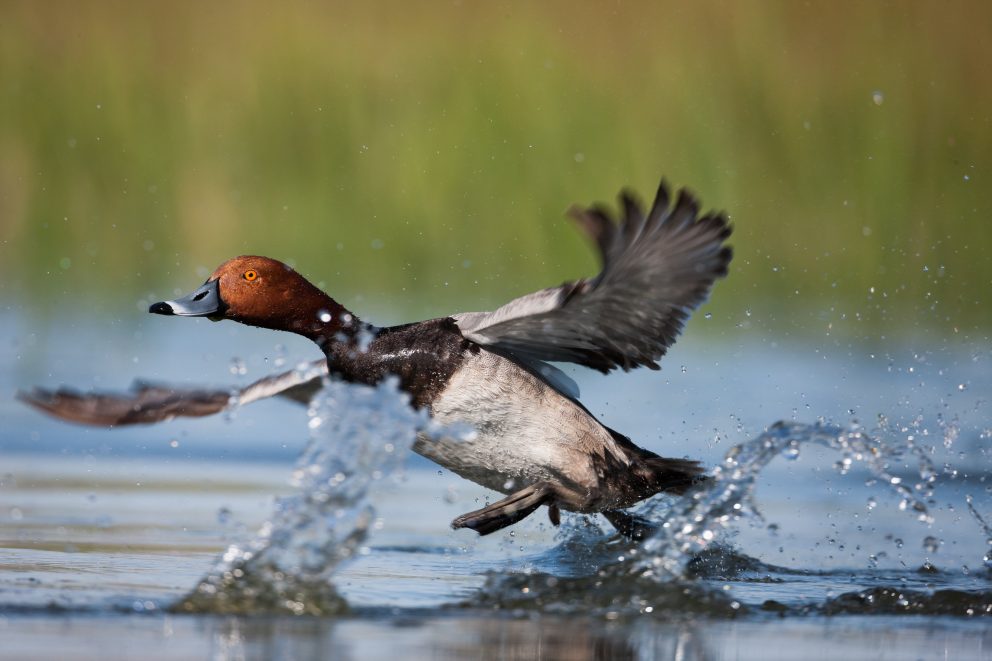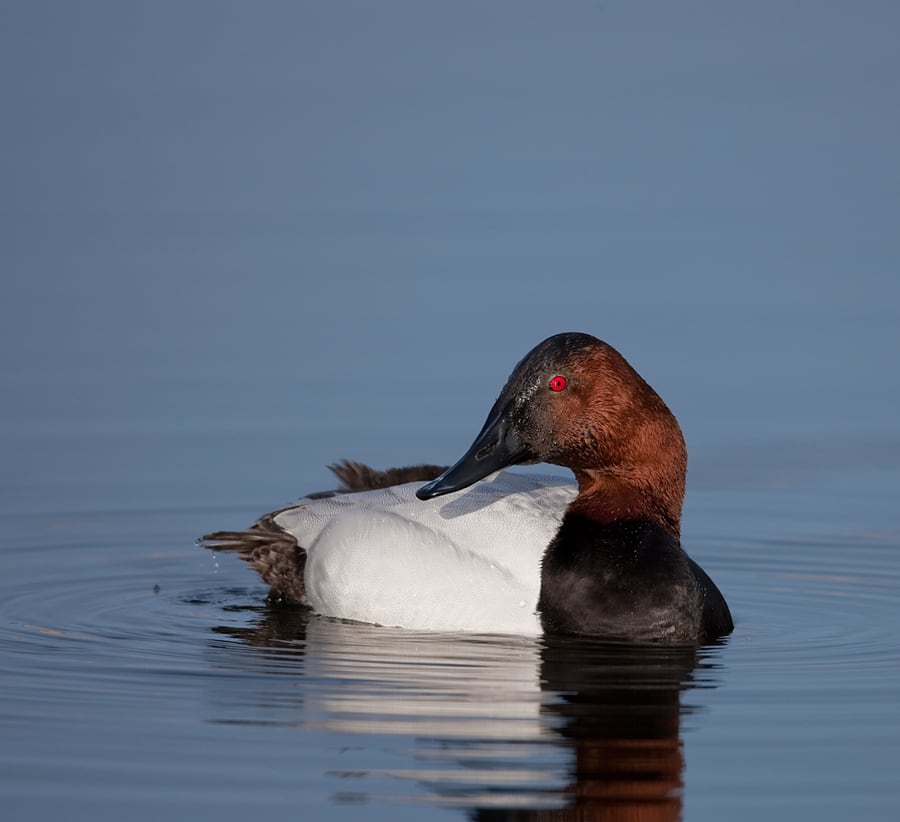- SCIENTIFIC NAME
- Aythya valisineria
- CLASSIFICATION
- Bird
- LIFE SPAN
- 10-19 Years
- SIZE
- 19-22” | 2.3-2.7lbs
- STATE CONSERVATION STATUS
-
- Priority Species
- FEDERAL CONSERVATION STATUS
- Least Concern
- GAME STATUS
- Game
- GAME TYPE
- Waterfowl
- Washoe
- Humboldt
- Pershing
- Churchill
- Mineral
- Lyon
- Douglas
- Carson City
- Storey
- Elko
- Lander
- Eureka
- White Pine
- Esmeralda
- Nye
- Lincoln
- Clark
Habitat & Range
Canvasbacks love to inhabit small lakes, deep-water marshes, ponds, and bays. They can typically be found in ponds lined with a dense border of cattails, reed grass, and rushes or wide open marshes. During migration season, they may use stopover sites such as estuaries, rivers, lakes, ponds, lagoons, even flooded agricultural fields!
- Desert Playas
- Lakes and reservoirs
- Marsh
Threats
- Declines in Water Quality
- Habitat Degradation
- Habitat Loss
- Human Development
Natural History
Canvasbacks consume seeds, plant tubers, insects, mussels, and small fish. They can dive seven feet below the surface of the water for aquatic plants. Female Canvasbacks sometimes lay eggs in other Canvasbacks’ nests to increase the chances of successful offspring. Redhead Ducks sometimes lay eggs in the nests of Canvasback’s, resulting in female Canvasbacks laying fewer of their own eggs.
Fun Facts
The word valisineria in its scientific name refers to wild celery, one of the Canvasback's favorite food. In order to start flying, Canvasbacks get a running start then are able to fly up to 56 miles per hour.














